Relief No. 1
Introduction
Text-to-speech Audio
Completed in 1959, this freestanding mezzo relief is considered a rare form by Henry Moore as it contrasts his preference to sculpt in the round. Though ambiguous, Relief No. 1 depicts the three major divisions of a human body - the head, the torso, and the legs. The undulating arrangement of shapes suggest a female form, while the emphasis on the recessions and projections evoke a forceful quality, unlike the pictorial narrative of a traditional relief. The intentionally incomplete, seven-foot bronze figure appears to be leaning or stepping forward through the implication of its tilted shoulders and extended right leg. In order to cast Relief No. 1, the plaster mold was cut into four sections. The finished bronze pieces were then welded together, in which the seams on the front were filed down, though are still visible on the back.
Images
Relief No. 1 by Henry Moore at the Nelson-Atkins Museum of Art, Kansas City, Missouri.
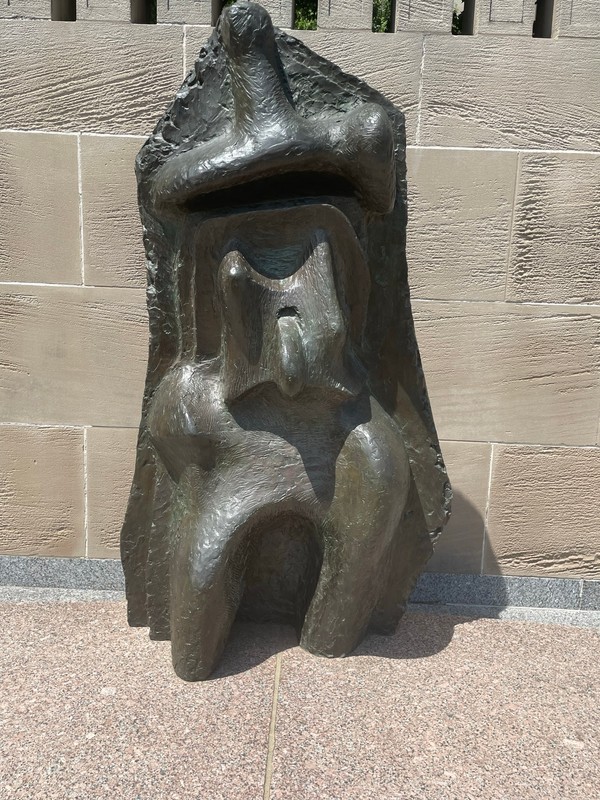
Henry Moore (1898-1986)
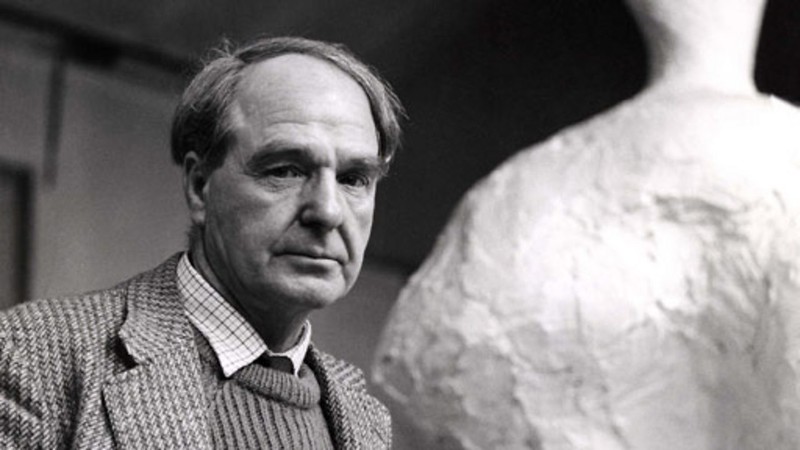
The 1955 brick relief in Rotterdam, Netherlands by Henry Moore.
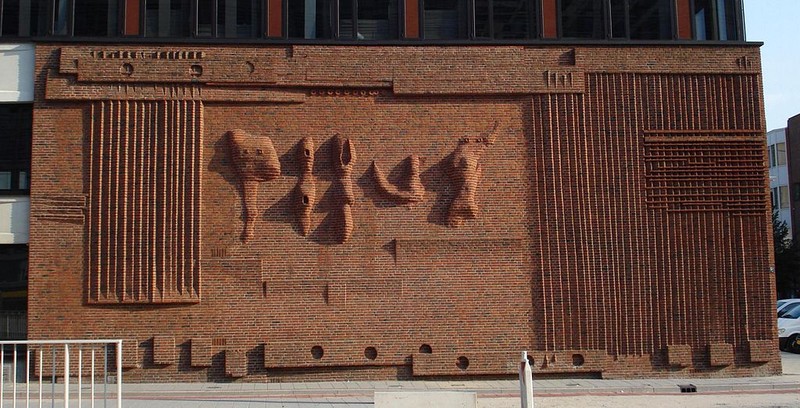
The series "Backs" by Henri Matisse were a likely inspiration for Relief No. 1 by Henry Moore. Courtesy of Tate, London, England.
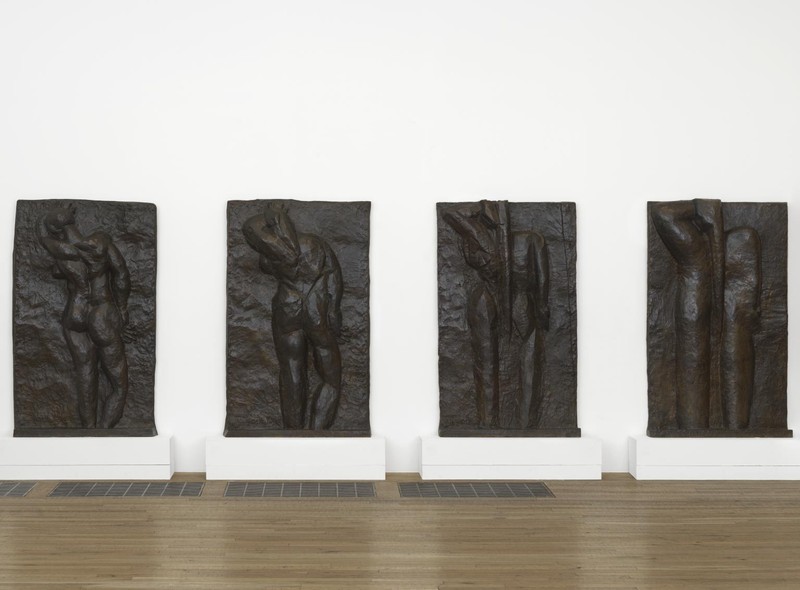
Plaster casts of Pompeii victims, like the ones seen here, are one likely inspiration for the undulating forms in Relief No. 1 by Henry Moore.
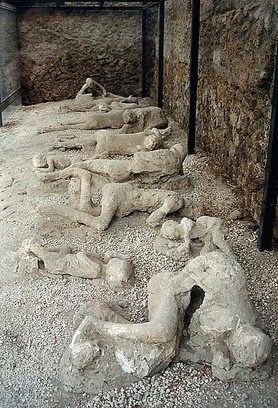
Relief No. 1 by Henry Moore at the Nelson-Atkins Museum of Art, Kansas City, Missouri.
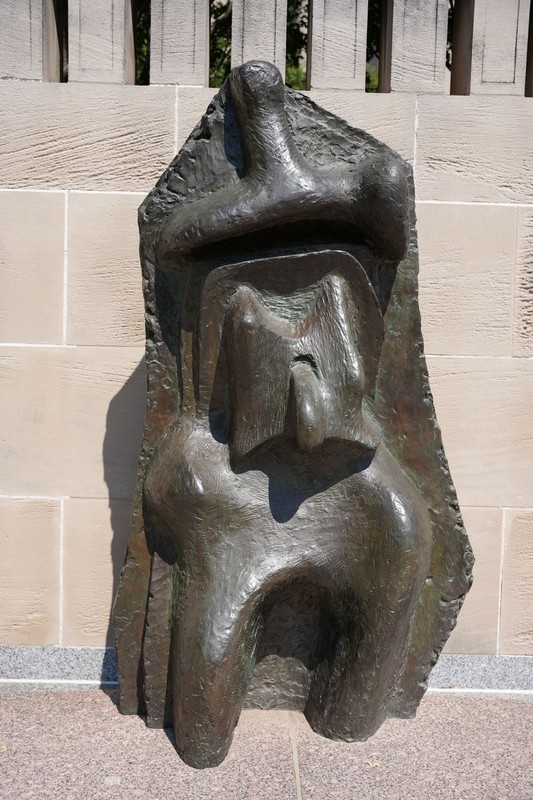
Backstory and Context
Text-to-speech Audio
Reliefs by Henry Moore can be seen as early as 1922, though he never had the desire to carve them as he preferred the spatial richness of sculpting in the round. However, his interest in relief sculpture was ignited in the 1950s. After he was commissioned in 1955 for a large relief in the brick facade at the Bouwcentrum building in Rotterdam, Netherlands, Moore got the idea of freeing traditional relief forms from their fixed state typically seen in a wall. The forms seen within Relief No. 1 have similar qualities to those of the maquette for the Bouwcentrum commission, Wall Relief Maquette No. 3.
Relief No. 1 is considered a freestanding relief, as the back is flat and meant to be exhibited along a flat surface but can still be viewed from multiple angles. Another likely inspiration for Relief No. 1 came the year after the Bouwcentrum commission, in May 1956 while Moore was serving as a trustee for the Tate gallery. He was advised on how to exhibit the series of Backs (1909-1930) by Henri Matisse, which are freestanding reliefs using a human form and closely resemble the style of Relief No. 1, which was created three years later.
The intention through Moore's commonly ambiguous forms were to be subconsciously completed from the viewers’ personal experiences, while using his own as inspiration. Often using the female form and theme of mother-and-child, Moore showed much compassion and emotion through his work. He was also able to capture great sympathy and humanity, which can be seen most obviously in his famous Shelter Drawings in the 1940s. The undulating forms within Relief No. 1 were possibly inspired by this passion and his own experience around this time. While visiting Pompeii in 1954, he became captivated by the plaster casts of preserved corpses that had been buried by the ash, even taking the time to photograph many of them. If one can picture Relief No. 1 lying flat on the ground, a resemblance to these victims can be seen.
Relief No. 1 was acquired by the Nelson-Atkins Museum of Art through the Mrs. Alfred B. Clark Foundation.
Gallery Label
“Relief No. 1 depicts the abstracted form of a woman standing with her weight on her left hip and her right knee jutting forward. Her head, undulating shoulders and breasts are implied by geometric cubic forms. Moore addressed this intentional ambiguity of form when he said that the "non-logical, instinctive, subconscious part of [the viewer's] mind must play a part" in completing and understanding his work. While most of Moore's sculptures are meant to be seen in the round, this relief sculpture was intended to be viewed against a wall.”
Sources
Gallery Label, Relief No. 1, 1959 Bronze, Nelson-Atkins Museum of Art. Accessed July 7th, 2022.
Relief No. 1, The Nelson-Atkins Museum of Art. Accessed September 14th, 2022. https://art.nelson-atkins.org/objects/9305/relief-no-1.
Alice Correia, ‘Relief No.1 1959 by Henry Moore OM, CH’, catalogue entry, April 2013, in Henry Moore: Sculptural Process and Public Identity, Tate Research Publication, 2015. Accessed September 14th, 2022. https://www.tate.org.uk/art/research-publications/henry-moore/henry-moore-om-ch-relief-no1-r1171978.
West Wind 1928-29 (LH58), Henry Moore Works in Public. Accessed September 14th, 2022. https://webarchive.henry-moore.org/works-in-public/world/uk/london/london-underground/west-wind-1928-29-lh58.
Photo by David Trowbridge
https://www.bbc.co.uk/archive/henry-moore/znkkf4j
https://commons.wikimedia.org/wiki/Category:Wall_Relief_-_Henry_Moore_%28LH_375%29#/media/File:Rotterdam_kunstwerk_Wall_Relief_no.1.jpg
https://www.tate.org.uk/art/artworks/matisse-back-i-t00081
https://en.wikipedia.org/wiki/File:Pompeii_Garden_of_the_Fugitives_02.jpg
Photo by David Trowbridge
